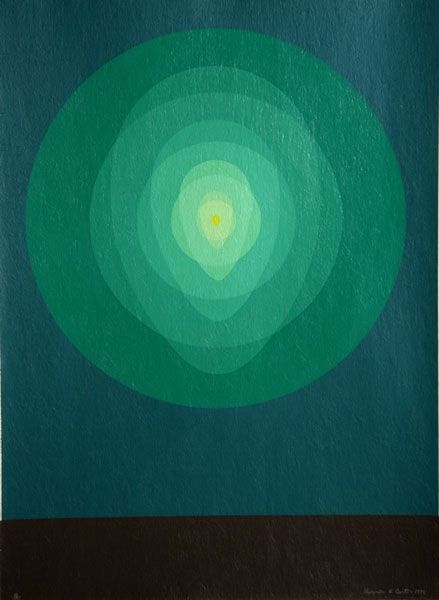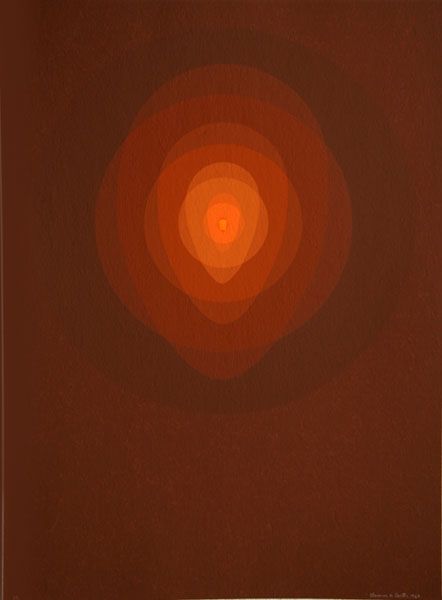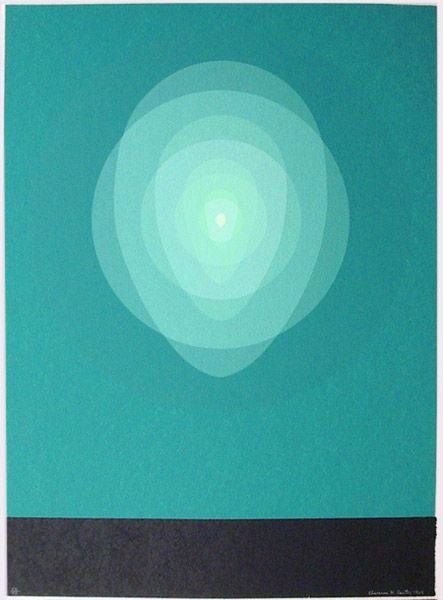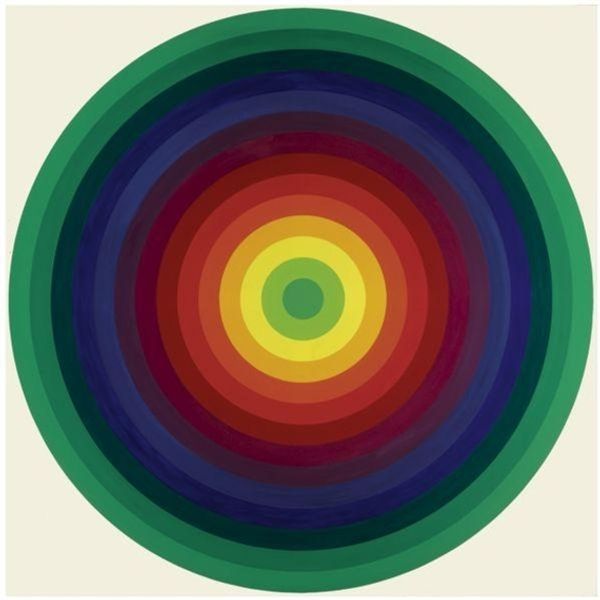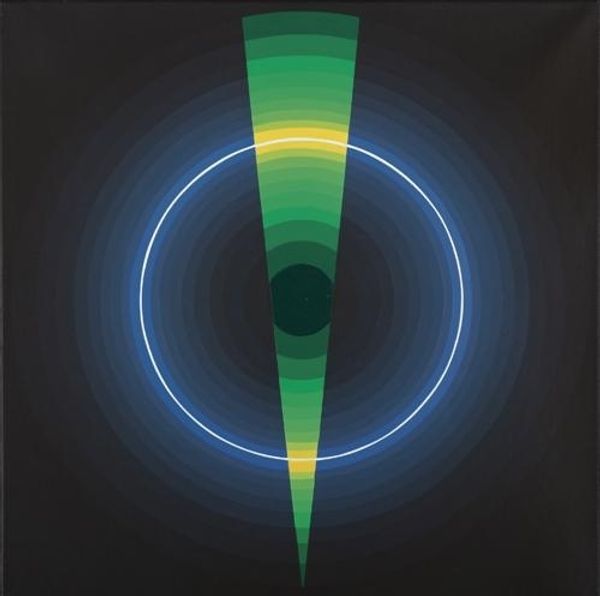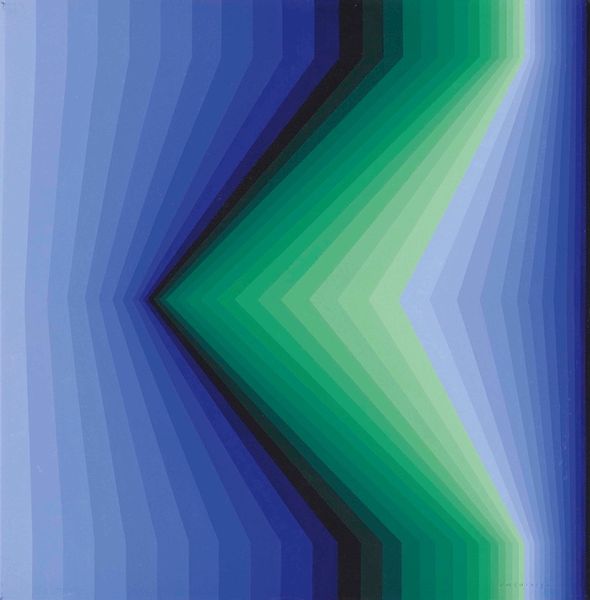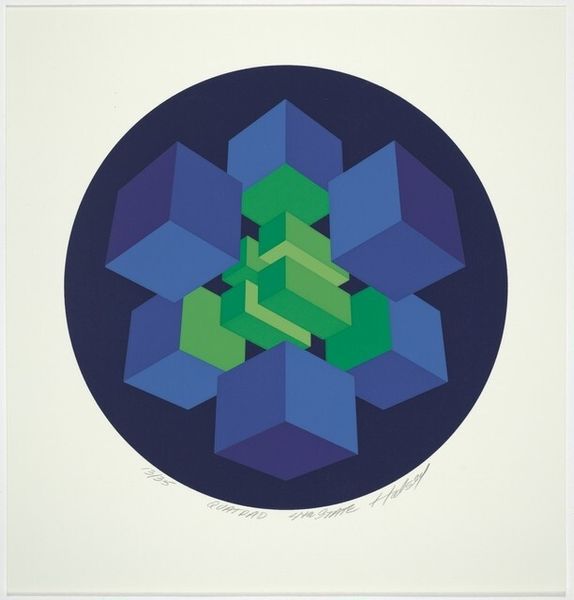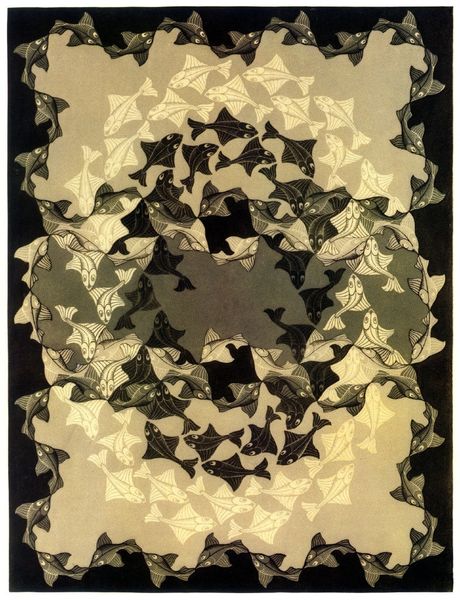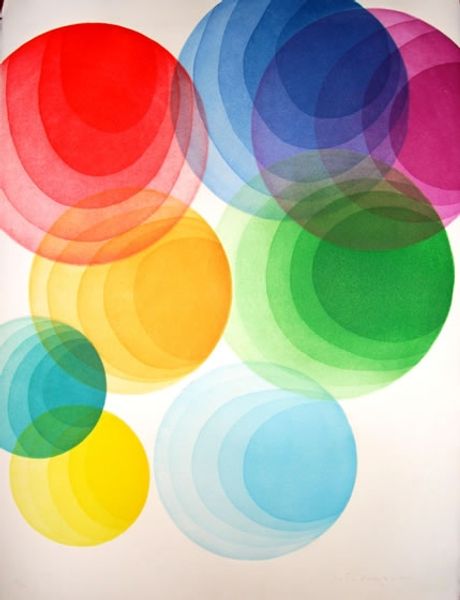
acrylic-paint
#
abstract-expressionism
#
abstract expressionism
#
colour-field-painting
#
acrylic-paint
#
geometric
#
abstraction
#
abstract art
#
hard-edge-painting
Copyright: Clarence Holbrook Carter,Fair Use
Editor: Here we have Clarence Holbrook Carter's "Green Mandala," an acrylic on canvas created in 1969. I find it quite calming, almost meditative, with that radiating green pattern against the dark background. What do you see in this piece? Curator: This piece resonates deeply with the social and spiritual quests of the late 60s. The mandala form itself, borrowed from Eastern traditions, speaks to a search for inner peace and harmony, values that were counterposed to the turmoil of the Vietnam War era and the fight for civil rights. Can we consider Carter’s work in conversation with contemporaneous feminist explorations of geometric abstraction by artists such as Agnes Martin and Emma Kunz? The use of hard-edged painting and color-field techniques reduces the visual language to its most fundamental aspects, stripping the geometry of all references but itself, thus, focusing on its capacity for meditative activation. Does that reading influence how you view its composition? Editor: I hadn’t considered it in that light. I was mainly drawn to the aesthetic of it, the soothing color palette. Curator: Right, but the very choice of that palette, those calming colors, also needs contextualization. What might "green" symbolize in a decade marked by both environmental awakening and pervasive social unrest? Can we think about “Green Mandala” not just as an individual artistic endeavor, but also as a statement about the necessity for healing, reflection, and the interconnectedness of all things during a period of great social divide? Editor: So, it's less about pure abstraction and more about a commentary on the search for peace? Curator: Exactly. Abstraction here doesn’t exist in a vacuum. Carter is in conversation with his contemporaries, responding to global issues and engaging with philosophical ideas of the time. How do you feel that affects your appreciation of the artwork? Editor: I think it gives it a greater sense of purpose and makes me realize how much context matters when trying to interpret a work of art. Curator: Absolutely, and hopefully it encourages a dialogue around similar themes of individual agency, social change, and artistic response today.
Comments
No comments
Be the first to comment and join the conversation on the ultimate creative platform.
